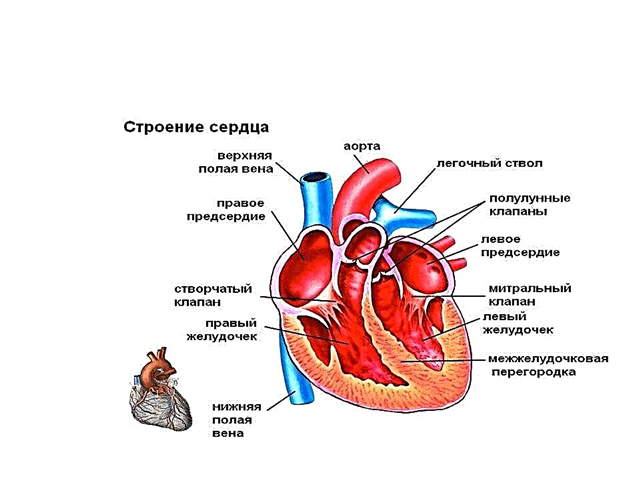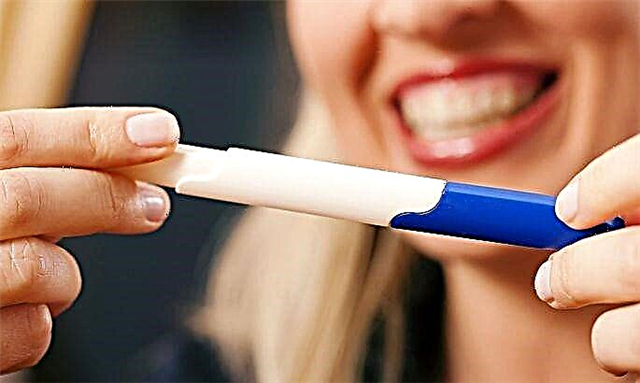
Diseases accompanied by the appearance of a cold are the most common in children's practice. Every mother is familiar with them. Sinusitis is one of the most common pathologies that occur with the appearance of a runny nose and bring significant discomfort to a sick baby.
What it is?
The inflammatory process that appears in the paranasal sinuses is called sinusitis. This disease is quite common throughout the world.
Both children and adults can get it. Cases of new diseases are encountered daily in huge numbers.
Normally, the body has several sinuses. Three of them are paired. These sinuses are bilateral and present on both sides of the nose. The seventh of them is called wedge-shaped and is not paired.

The inflammatory process can be either on one side or move to the other half of the face.
It is important to note that all paranasal sinuses are in communication with the nasal passages. The mucous membrane lining these formations is rather quickly involved in the inflammatory process. Severe inflammation leads to the development of edema and impaired blood supply to the affected area.
The development of the paranasal sinuses occurs gradually. Their sizes and cavities grow as the child grows. The anatomical structure of the paranasal sinuses in a newborn baby is significantly different from that of a schoolboy.


Normally, these formations contain air. This anatomical feature allows for normal nasal breathing.
Kinds
Doctors identify several clinical forms of this disease. For the first time, the disease in a baby is called acute. Usually, this clinical type of disease proceeds with the development of numerous adverse symptoms.
In infants, the course of acute sinusitis can be much more severe than in school-aged children.
If a child suffers from exacerbations of sinusitis several times a year, then in this case, doctors are already talking about a chronic variant of the disease.
It is important to note that babies with immunodeficiency conditions have a higher risk of chronicity of this disease.


To eliminate adverse symptoms, more intensive treatment is required, as well as secondary prevention of new exacerbations of the disease.
As a specific paranasal sinus is affected, sinusitis may be:
- Sinusitis. This form is characterized by inflammation in the maxillary or maxillary sinus.
- Ethmoiditis. In this form of the disease, inflammation occurs in the area of the ethmoid bone. The ethmoidal sinus is often involved in the inflammatory process.
- Frontit. The inflammatory process in this form of the disease affects the frontal sinus.
- Sphenoiditis. The sphenoid bones are involved in the inflammation.

A variety of reasons can cause this disease. The most common of these are bacterial or viral infections. Getting into the child's body by airborne droplets, bacteria and viruses actively multiply on the mucous membranes of the upper respiratory tract.
Their rapid reproduction and replication contributes to the fact that a whole cascade of inflammatory reactions is triggered, which lead to the appearance of specific symptoms of this disease in the baby. A bacterial infection often leads to symptoms of purulent sinusitis.
Contact with the mucous membranes of the nose of various allergens contributes to the development of allergic sinusitis. This clinical type of disease is quite common in babies over 3 years old.


Doctors note that the risk of developing allergic sinusitis is significantly increased in children who live in large industrial cities or near highways.
Children with chronic lower respiratory tract disease are also more likely to have this condition.
Symptoms
The clinical signs of sinusitis can be very different. The degree of their severity depends on many initial factors, as well as the state of immunity of the sick child.


Babies with many chronic illnesses suffer worsening sinusitis much harder. Also, sinusitis is quite difficult in children suffering from diabetes mellitus or other systemic metabolic diseases.
The incubation period for this disease can be different. It depends on the specific cause that led to the development of the disease. For most bacterial sinusitis, the incubation period is usually 3 to 10 days.
Viral sinusitis appears faster. Usually, only a couple of days is enough for the development of adverse symptoms in such cases.

The most classic symptom of sinus inflammation is the appearance of congestion during breathing. This manifestation of the disease usually increases gradually. Respiratory distress worries the child at any time of the day. This leads to the fact that at night the sick baby often wakes up and sleeps quite restlessly. Severe congestion contributes to the fact that the child begins to breathe with his mouth parted.
The appearance of a cold also quite often accompanies the development of sinusitis. It is important to note that nasal discharge may not occur in all sick babies.
Purulent sinusitis is usually accompanied by the release of abundant thick secretion from the nasal passages. It usually has a yellow or greenish tint. In many cases, it is difficult for a baby to blow out such a discharge, since it is quite dense in its consistency.


Soreness in the projection of the paranasal sinuses is a fairly common manifestation of this disease. The intensity of the pain syndrome can be very different. Quite often she is of a crushing nature. A severe course causes increased pain.
Severe pain syndrome is manifested in infants by crying or increased moodiness.

The rapid spread of the inflammatory process through the surrounding tissues contributes to the appearance of pain in various parts of the face.
At first, pain appears in the area of the wings of the nose, and then it can go to the area of the lower jaw, to the ear, and also to the neck. The spread of pain syndrome is a very unfavorable symptom and requires urgent consultation with the attending physician.

Bacterial or viral infections that lead to inflammation in the paranasal sinuses contribute to an increase in the child's body temperature. Its values may be different and depend on the severity of the course of the disease.
Mild forms of the disease are accompanied by an increase in temperature up to 37-38 degrees. Febrile usually occurs with bacterial infections and greatly aggravates the course of the disease.
A sick baby feels rather "overwhelmed". He becomes very lethargic, refuses his favorite food, does not sleep well. Babies of the first months of life fall asleep very badly and can wake up quite often during the night.
Long-term sinusitis contributes to the development of persistent oxygen hypoxia, which is manifested in the baby by the appearance of concomitant chronic diseases.


A high temperature can cause a severe fever in a sick baby. The child feels a strong chill.
Pronounced symptoms of intoxication are manifested in the baby by the appearance of dryness in the oral cavity. The baby's lips become very dry and in some cases may even crack. Breathing through the mouth only worsens severe dry mouth.
The spread of the inflammatory process leads to the fact that the baby may have concomitant symptoms of conjunctivitis. They are manifested by severe lacrimation and redness of the eyes. The kids feel extremely bad. They start to be capricious and try to spend more time at home.


Babies under three years old cannot yet complain to adults about the deterioration in their health. Insufficiently active work of their immune system contributes to the rapid spread of inflammation to the area of the middle and inner ear. This is manifested by the appearance of fluid from the ears in the baby.
The appearance of pus from the ear in a child should alert parents and become a significant reason for the fastest contact with a pediatrician.


A persistent preceding runny nose contributes to the impairment of odor perception. The impaired sense of smell also leads to the fact that the child's appetite is significantly impaired. The child not only does not feel smells, but also ceases to correctly determine the taste of products.
In young children, lack of appetite can lead to weight loss.
School-aged toddlers with chronic sinusitis experience declines in school performance. Insufficient oxygen supply due to impaired nasal breathing contributes to the deterioration of the brain.
A large child remembers educational material worse, it is more difficult for him to concentrate on different subjects. Toddlers get tired quite quickly even after completing their usual daily activities.


Diagnostics
If the child has difficulty breathing or other specific symptoms of sinusitis, parents should seek the advice of their doctor. Usually, therapy and diagnosis of pathologies of the paranasal sinuses are carried out by children's otolaryngologists. These doctors initially conduct an extended clinical examination.
For a full examination of the nasal cavities, the doctor uses special medical instruments.
Laboratory tests are also included in the complex of diagnostic measures that are carried out for sinusitis.


A mandatory test is a complete blood count. Sinusitis is usually characterized by an increase in the number of leukocytes and an accelerated ESR. Specific changes in the white blood cell count can help doctors determine the viral or bacterial nature of a particular disease.
As the disease progresses, doctors do several blood tests. This helps not only to monitor the development of the disease, but also to determine the effectiveness of the prescribed treatment. This method is easy to carry out even in the smallest patients and is very informative.

To identify pathological secretions, X-ray of the paranasal sinuses is performed. This study allows you to fairly accurately determine the presence of pathological fluid.
A significant disadvantage of this examination is radiation exposure. This feature makes it possible to use this diagnostic method only in older babies.
The most modern research for detecting pathological secretions in the paranasal cavities is computed tomography.


This examination helps to accurately establish the presence of cavity fluid, as well as to identify various anatomical structural defects. This test is used only in the most difficult diagnostic cases.
Treatment in children
The main task of therapy is to normalize nasal breathing and improve the level of local immunity. This goal can be achieved by prescribing a different complex of treatment.
The predominant therapy is the use of drugs. The choice of these funds is made by the attending physician.
When a bacterial infection is detected, which has become the cause of the development of the disease, doctors prescribe antibacterial drugs.

Currently, otolaryngologists prefer antibiotics with a wide spectrum of action. Such treatment allows you to improve the well-being of a sick baby after a course of therapy.
The most successful in use are various penicillins protected by clavulanic acid, which, for example, include "Amoxiclav", "Suprax Solutab", "Augmentin".
The choice of the course dosage and the timing of use is carried out by the attending physician. On average, the course of therapy for exacerbation of chronic bacterial sinusitis is 7-14 days. If a child has allergic reactions to these drugs, then drugs from other groups are prescribed to him.


Symptomatic treatment involves the appointment of vasoconstrictor nasal drops or sprays. They are applied 3-4 times a day for 2-5 days.
Longer use of these drugs should be discussed with the attending physician, as it can lead to the development of adverse complications.
Quite often, babies use: "Nazivin", "Tizin" and others.
The use of antihistamines can reduce severe swelling in the nasal cavity and improve nasal breathing. The drugs are usually prescribed for 7-10 days.
Many funds are prescribed for use in the first half of the day. Such funds include: "Loratadin", "Claritin", "Suprastin", "Tsetrin", "Zirtek" and others.


Antipyretic drugs are used to normalize body temperature. They are prescribed for babies with a febrile condition. Medicines can be used when the body temperature rises above 38 degrees. In pediatric practice, paracetamol or ibuprofen-based medicines are successfully used.

To eliminate the pathological secretion from the nasal cavity, it is imperative to rinse the baby's nose several times a day. For this, sea water solutions can be successfully used.
Today there is a huge number of a wide variety of products that are sold in any pharmacy.
You can also prepare a solution containing a certain concentration of salt at home.


Physical therapy plays an important role in the treatment of chronic sinusitis. Various physiotherapy methods help to reduce the duration of exacerbation, as well as prevent further deterioration in well-being.
UHF therapy, ultrasound in the paranasal sinus area and phonophoresis have been successfully used in pediatric otolaryngological practice for many years.

In some cases, conservative treatment does not lead to the desired effect. In such a situation, a surgical operation is performed, which patients usually call a "puncture". This procedure is performed only by a pediatric otolaryngologist using a special medical instrument.
To eliminate pathological fluid or pus from the inflamed paranasal sinus, a puncture is performed. It is an invasive procedure and can lead to complications.

How to treat at home?
It is possible to carry out sinusitis therapy on your own only after prior consultation with your doctor.
The most important way to treat inflammation of the paranasal sinuses is to rinse them. To prepare a solution for such treatment, you can use ordinary table salt and iodine.
To prepare your home remedy, take a glass of boiled water cooled to a comfortable temperature. Add 1 teaspoon of table salt and 1-2 drops of iodine tincture to the liquid. Stir until completely dissolved.


You can wash your baby's nose using a small "pear" or by means of an irrigator.
In some cases, doctors allow inhalations with herbal decoctions. Plants with a pronounced antibacterial and restorative effect are excellent for such treatment, which include: sage, calendula, chamomile, fir, eucalyptus.Also ready-made aromatic oils can be used for inhalation.

To achieve a more lasting therapeutic effect, before performing this procedure, you should rinse the nasal cavity with sea water.
Inhalation is recommended 2-3 times a day. Such treatment will be optimal for older babies who already understand how this procedure will be carried out. To achieve the effect, usually 8-10 procedures are enough.
For information on how to treat a runny nose in children, see the next video.



